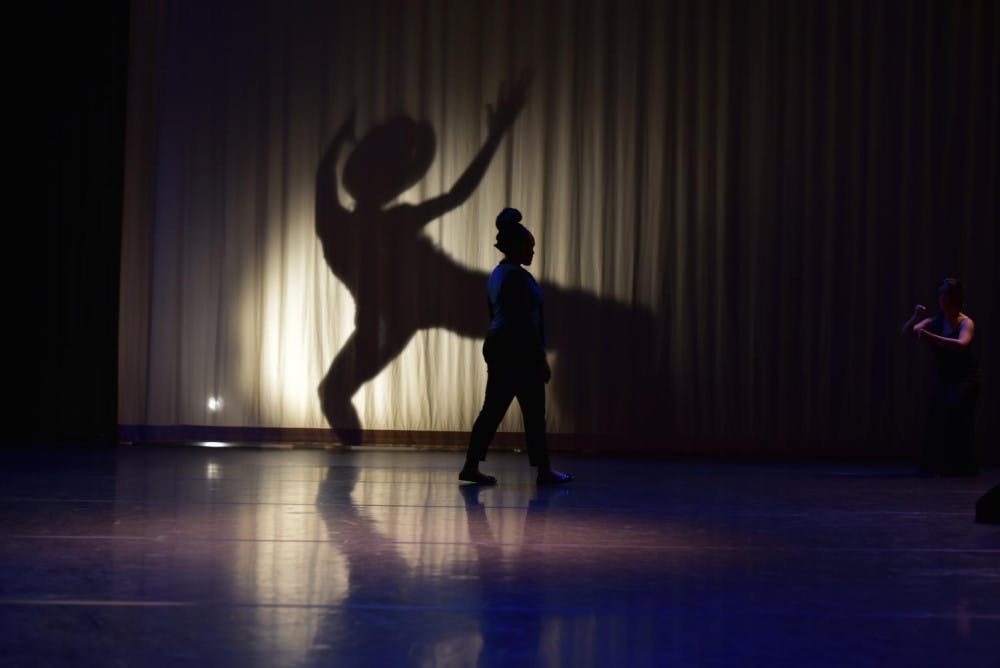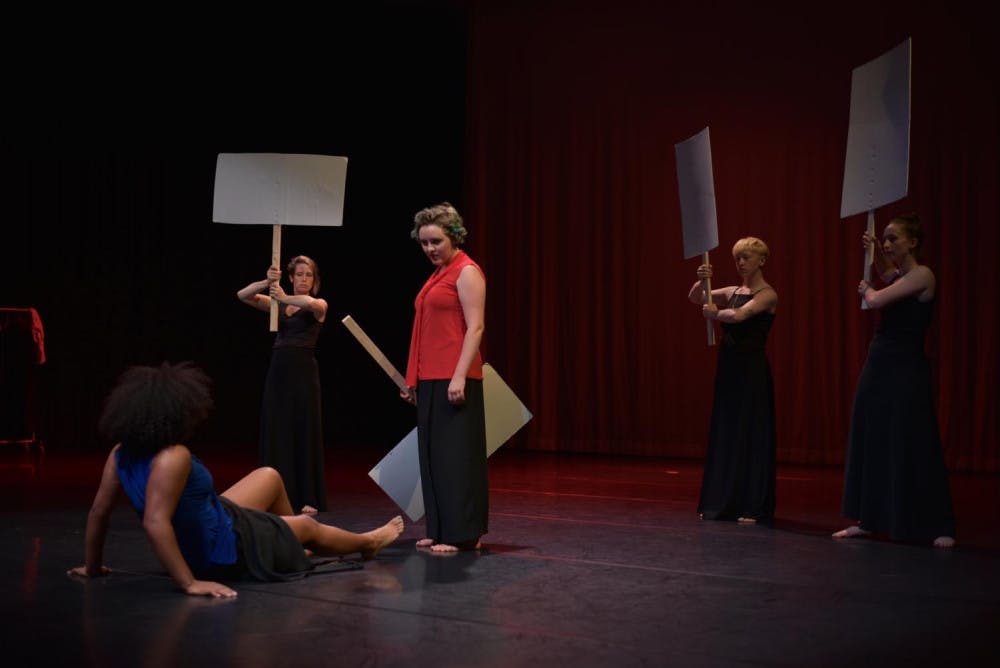“Why should we want to know a stranger when it is easier to estrange another? Why should we want to close the distance when we can close the gate?”
Poignant and pertinent in today’s climate, such are the questions Toni Morrison poses in her latest work “The Origin of Others,” on which Middlebury’s 2018 Clifford Symposium is centered.
Beginning Thursday, Sept. 20, the Symposium engaged the college community in conversations about, as Morrison writes, “the human project — which is to remain human and to block the dehumanization and estrangement of others.” Among the many thought-provoking discussions on race and the nature of American racism was an arts performance of an adaptation of Toni Morrison’s 1983 short story “Recitatif.”
The play discusses the story of two girls who become friends despite their different backgrounds. The work featured script adaptation and direction by Michole Biancosino ’98, choreography by Christal Brown and original music score by Matthew Evan Taylor.
In her book “The Origin of Others,” Morrison discusses how “writing non-colorist literature about black people is a task that is both liberating and hard.” It was her attempt to “de-fang cheap racism, annihilate and discredit the routine, easy and available color fetish, which is reminiscent of slavery itself.”
As the lights in the Mahaney Center for the Arts Dance Theatre dimmed, bodies of dancers fluidly moved on stage, each not knowing what race they stood for until the narrator, Starr Kirkland, pointed them out one after another.
At one point, the girls ran for shirts that Kirkland held. Blue shirts represented one race while red, another; nonetheless, it was never fully articulated which color signified what race. Perhaps this was because Morrison intended to “eliminate color altogether, using social class as the marker.” The rapidness of the motion, along with its randomness and lack of choice, portrayed to the audience how privileges, namely race, class and belonging, are merely the luck of the draw, and one does not have any power over the background one comes from.

The performance is a creative adaptation of Toni Morrison’s eponymous short story.
Over the course of 40 minutes, the audience was taken to St. Bonny’s orphanage, where we met two girls, Twyla and Roberta. The scene was particularly striking, as it elaborated on the different reasons that the two ended up there, thus shedding a light on the social classes to which Morrison alluded. However, despite their racial and social differences, abandonment brought the two children together. Twyla mentioned that her mother “danced all night,” while Roberta discussed her mother’s sickness.
Throughout the play, their respective races were never mentioned. We learned only that the two girls came from different backgrounds. When they were placed together in a room, Twyla resisted by stating, “Mother won’t like you putting me in here,” which shows the important role families have in reinforcing stereotypes and how stereotypes of difference are perpetuated in the U.S. from the smallest circles, our parents.
As the show progressed with a dialogue between the two girls about their mothers, the audience realizes that Twyla has difficulty coming to terms with and telling others about her mother’s occupation of “danc[ing] all night.”
After interviewing some of the performers and audience members about what “dancing all night” meant for Twyla’s background and identity, the answers generally pointed to her working as a prostitute.
Martin Troška ’21, a member of the Dance Company of Middlebury, said that the replies evoked the “stereotypes of people and what they were exposed to depending on the environment they grew up in.”
Over time, the audience was introduced to Maggie, a girl who is mute and lacks the usual cues that let one know if a person is culturally “black” or “white.” Thus, the two girls impose a different racial marker on her, based on their feelings about her as a victim.
“The phantom of Maggie that constantly reappeared was particularly strong, as it symbolized how some individuals, due to their disabilities, can escape the norms and labels that society placed upon them,” said Masha Makutonina ’21.
The play involved a progressive timeline of Twyla and Roberta. Yet what stood out is that despite their maturing, the scenes played out the same way they did when they first met, which underscored how individuals are affected by the events of the past.
Morrison included many aspects of “differences” in the play, including race, disability and socioeconomic background, which everyone in the audience as well as the performers could identify with, despite the show not mentioning them explicitly. The author believes, however, that “most readers insist on searching for what I have refused them.”
Approaching Difference in Toni Morrison’s 'Recitatif'

PELE VONCUJOVI/THE MIDDLEBURY CAMPUS
The shirts in different colors, though not explicitly, were representations of different races.
The shirts in different colors, though not explicitly, were representations of different races.
PELE VONCUJOVI/THE MIDDLEBURY CAMPUS
Comments



